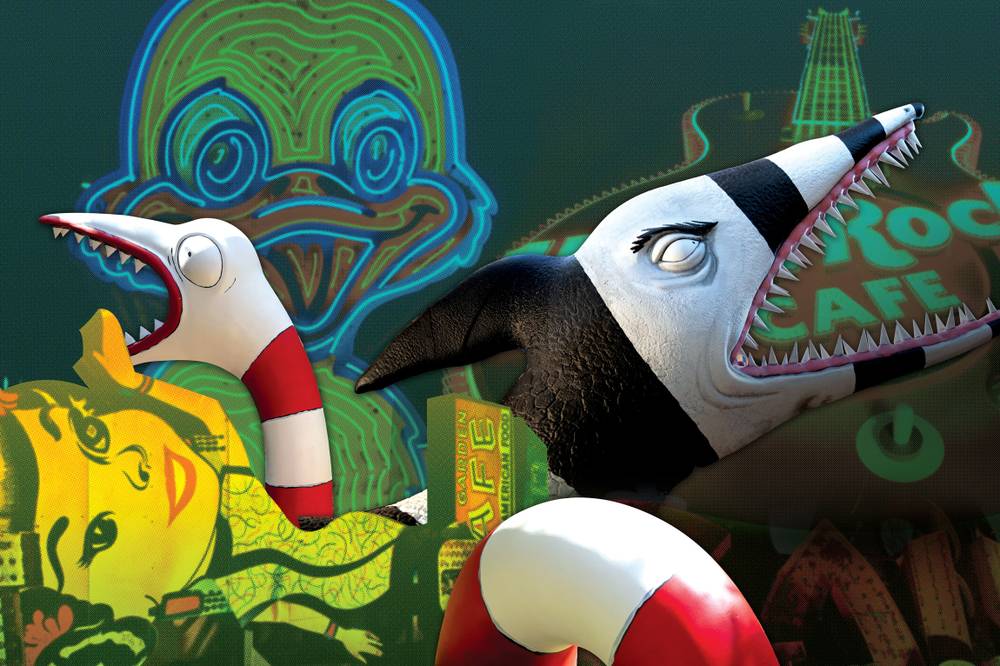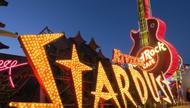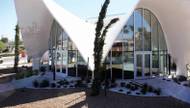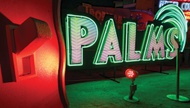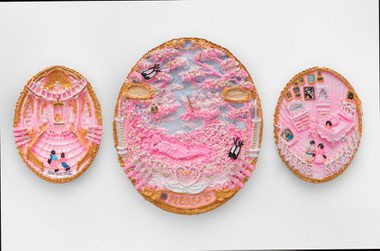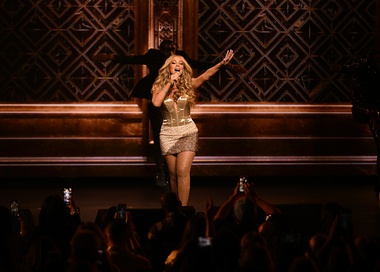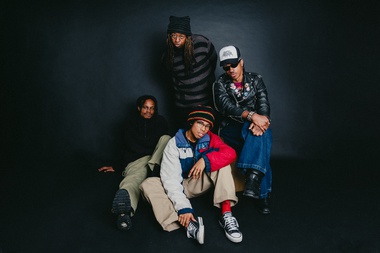Nearly every fact about Tim Burton is an are you serious? Take his schooling, for an example: He attended the California Institute of the Arts, where his classmates included Pixar Animation Studios founder John Lasseter and The Incredibles director Brad Bird. (In a February 2011 interview with Vanity Fair, Burton fondly remembered his CalArts class as “geeks and weirdos.”) Or his first job: grinding out terrifyingly gothic conceptual art for pre-Renaissance Disney films such as The Black Cauldron and Tron, none of which was used in the final films. (Another CalArts classmate, Beauty and the Beast co-director Gary Trousdale, told Vanity Fair: “[Disney] didn’t know what the hell to do with Tim. They were scared of him.”)
One feels similarly incredulous looking at his filmography. Over the course of his first working decade—beginning with 1985’s Pee-Wee’s Big Adventure—Burton built, Frankenstein-like, one spooky unicorn after the next: He redefined black comedy (Beetlejuice), blockbuster action (Batman) and even teen romance(Edward Scissorhands). More importantly, he created an instantly recognizable visual aesthetic, which he is constantly expanding and revising; in essence, he created a “cinematic universe” years before such a thing became Hollywood’s preferred way of operating. If the two-headed sandworms of Beetlejuice, the ghoulish denizens of The Nightmare Before Christmas’ Halloween Town and the gum-chewing, dead-eyed bombshell assassin of Mars Attacks! don’t live under the same roof, at least they went to school together.
In fact, Burton has so many strange and unusual creatures running through his head—the product of an introverted childhood informed by the examples of Vincent Price, Dr. Seuss and Roald Dahl—that they began to spill out of his movies and into other mediums. In 1997, Burton published an illustrated book of poetry and stories called The Melancholy Death of Oyster Boy & Other Stories; several years later, its characters appeared in stores as “Tim Burton’s Tragic Toys for Girls and Boys.” Tough though it may be to imagine children playing with Roy the Toxic Boy or The Pin Cushion Queen, those kids are out there now, grown up—and they’re probably the audience for Burton’s museum shows, which began at New York’s Museum of Modern Art in 2009.
MoMA’s Tim Burton exhibition was an ambitious effort to present “the full range of [Burton’s] creative work, tracing the current of his visual imagination from early childhood drawings through his mature work in film.” It featured paintings, photography, storyboards, puppets, sculptures, video and more, much of it never before seen. It gave context to Burton’s body of film work, making their threads of connection more manifestly clear. The show proved to be one of MoMA’s most popular, drawing some 800,000 visitors. From there, refined versions of the show traveled to LA, Paris, Seoul, Prague, São Paulo and Hong Kong, inspiring thousands more to view Burton’s ever-expanding menagerie.
Lost Vegas: Tim Burton @ The Neon Museum, Burton’s first stateside museum show in a decade, was seemingly prophesied in 1996’s Mars Attacks!, which featured an extended sequence in YESCO’s Neon Boneyard. In a way, Burton was instrumental in creating our Neon Museum; before that, the Boneyard was known only to savvy locals and a few fashion photographers. In giving the Boneyard a starring role, he added it to his universe—some of whose fantastical creatures will be present at the show, interacting with our history in ways no one can predict. Even the Brilliant! light show will have “a Tim Burton twist.”
In other words, Tim Burton isn’t merely visiting Las Vegas. He’s welcoming the city back into his world of geeks and weirdos. It feels right.
TIM BURTON: LOST VEGAS October 15-February 15, 2020. Monday-Wednesday, 9 a.m.-10 p.m.; Thursday-Sunday, 9 a.m.-11 p.m.; $30. Neon Museum, 702-387-6366.
